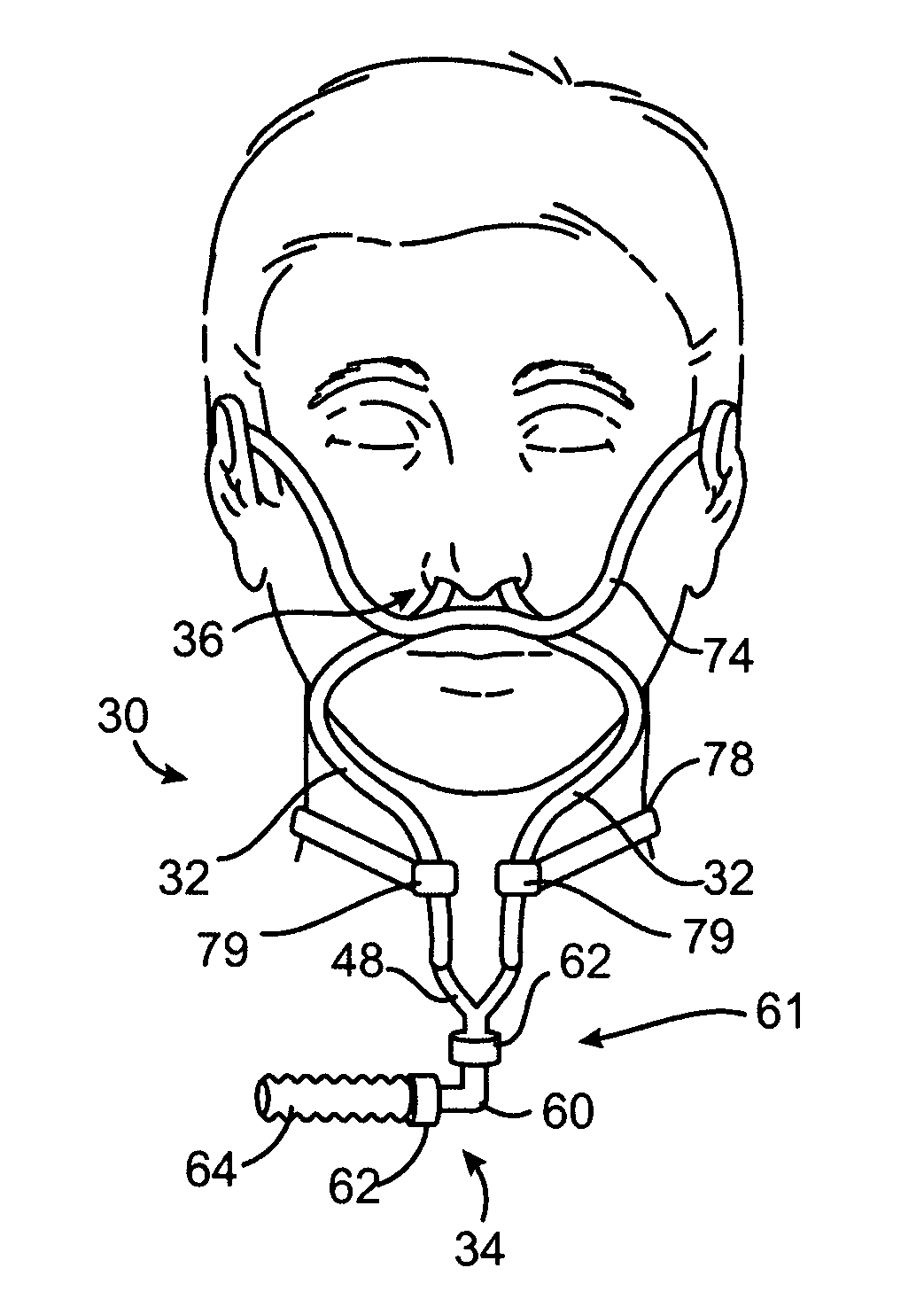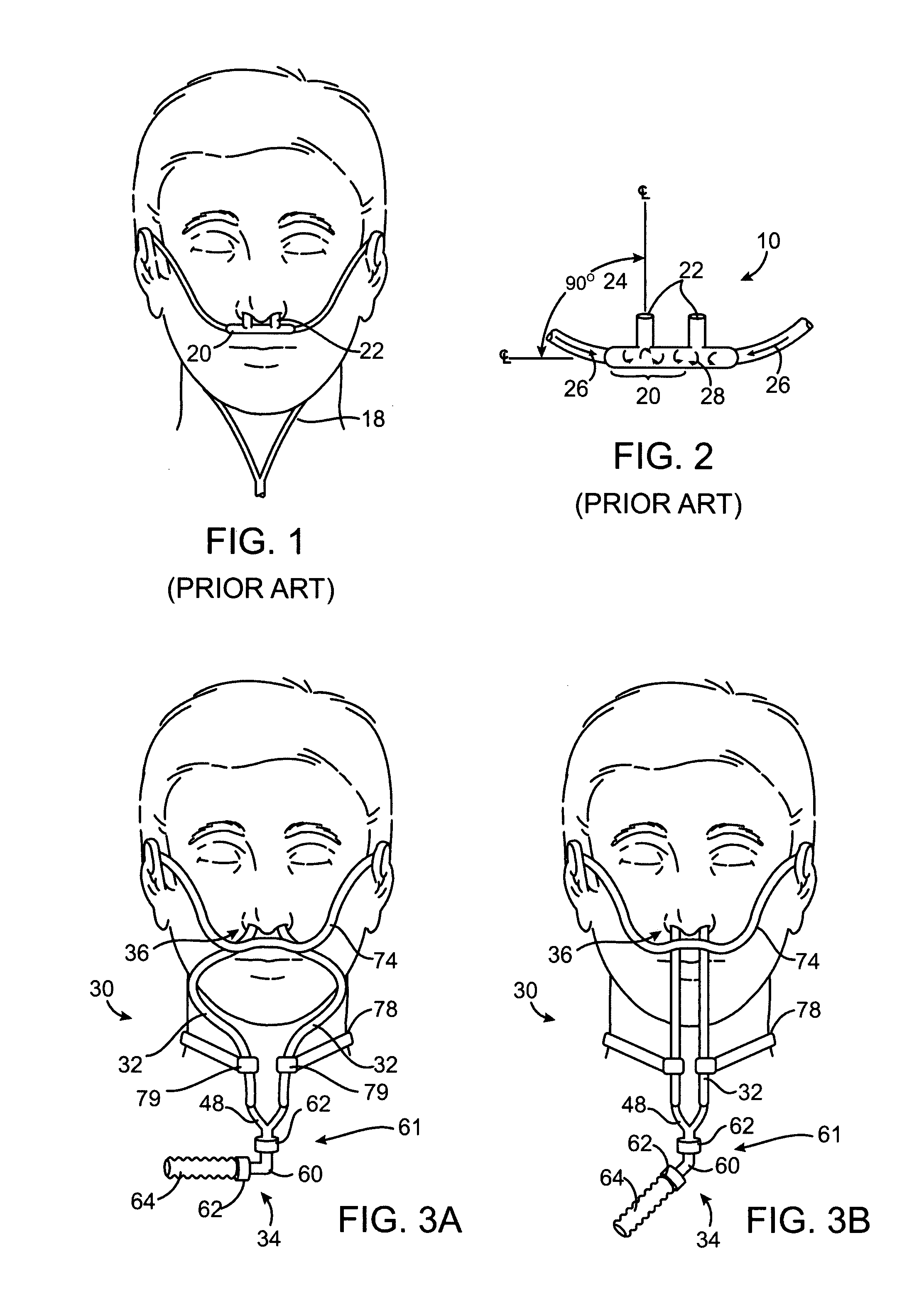Method and device for non-invasive ventilation with nasal interface
a technology of patient interface and non-invasive ventilation, which is applied in the field of non-invasive ventilation (niv) patient interface devices, can solve the problems of significant design deficiencies, undesirable design in osa applications, and less comfortable for users
- Summary
- Abstract
- Description
- Claims
- Application Information
AI Technical Summary
Benefits of technology
Problems solved by technology
Method used
Image
Examples
third embodiment
[0189]In the portable PGU 700, optional pressure generating mechanisms are described. Besides the conventional rotary vane blower and fan 716 for generating pressure, the pressure can be generated by (1) a fan with a concentric motor, (2) a piston pump, (3) a turbine, (4) a centrifugal pump, (5) a gear pump, (6) a rotary piston pump, (7) an impeller pump, or (8) an dual action piston pump with the same direction output on both strokes by the use of valves. Also, besides generating flow with the conventional single pump systems, there can be an array of small pumps, preferably in parallel, so as to create greater flow output in a smaller overall size, or to alternate between pumps where the pump outputs are non-continuous as in a piston pump.
[0190]In a forth embodiment of the portable PGU 700 to further facilitate portability, the unit can be powered with a non-120 Volt AC power source, such as a 12 Volt DC power source (with an internal battery, an external battery or cigarette ligh...
fifth embodiment
[0191]In the portable PGU 700, the air being delivered to the patient can be conditioned in a variety of manners, such as moisturizing and warming. Warming can be accomplished by collecting warm air that is generated from the ABF or pump motor and inputting it into the ABF, or by channeling the ABF air output past the motor to warm the air. Moisturization can be accomplished by including a low resistance filter in the ABF air outlet path wherein the filter can be wetted by the user so that the air collects moisture on the way to the patient. Further, the moisturizer can be warmed by warm air that is collected from the ABF motor, or alternately can be warmed by a peltier element. In these embodiments the ABF motor is also prevented from overheating do to the bleeding off of heat.
sixth embodiment
[0192]In the portable PGU 700, the unit 700 may also include an exhalation valve (for example a directional flapper valve) that leaks to atmosphere during exhalation but which is sealed to atmosphere during inspiration. The valve is preferably included near the air outlet of the PGU 700.
[0193]In a further embodiment of the portable PGU 700, the unit is constructed with flush mounted, recessed mounted or cover-protected dials, gauges, connectors and controls to avoid damage to it. This facilitates reliability and robustness of the unit for traveling use.
[0194]In another embodiment of the portable PGU 700, the unit enclosure is ruggedized, for example by using polymer or rubber construction of the enclosure, or by surrounding the enclosure with rubber or polymer protection. The PGU 700 can also include a corrugated air hose that can be compressed from its full length of 6′-8′ to 1′ to facilitate portability. The PGU 700 can also bleed off room temperature air in the ABF to cool the in...
PUM
 Login to View More
Login to View More Abstract
Description
Claims
Application Information
 Login to View More
Login to View More - R&D
- Intellectual Property
- Life Sciences
- Materials
- Tech Scout
- Unparalleled Data Quality
- Higher Quality Content
- 60% Fewer Hallucinations
Browse by: Latest US Patents, China's latest patents, Technical Efficacy Thesaurus, Application Domain, Technology Topic, Popular Technical Reports.
© 2025 PatSnap. All rights reserved.Legal|Privacy policy|Modern Slavery Act Transparency Statement|Sitemap|About US| Contact US: help@patsnap.com



